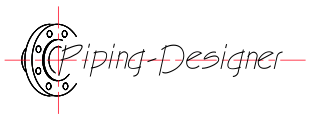Hall Effect
Hall Effect Formula |
||
|
\( V_h \;=\; \dfrac{ I \cdot B }{ n \cdot q \cdot t }\) (Hall Effect) \( I \;=\; \dfrac{ V_h \cdot n \cdot q \cdot t }{ B }\) \( B \;=\; \dfrac{ V_h \cdot n \cdot q \cdot t }{ I }\) \( n \;=\; \dfrac{ I \cdot B }{ V_h \cdot q \cdot t }\) \( q \;=\; \dfrac{ I \cdot B }{ V_h \cdot n \cdot t }\) \( t \;=\; \dfrac{ I \cdot B }{ V_h \cdot n \cdot q }\) |
||
| Symbol | English | Metric |
| \( V_h \) = Hall Voltage | \(V\) | \(V\) |
| \( I \) = Electric Current throught the Conductor | \(A\) | \(A\) |
| \( B \) = Magnetic Flux Density | \(G\) | \(T\) |
| \( n \) = Charge Carriers Density | \(ft^3\) | \(m^3\) |
| \( q \) = Charge of Each Carrier | \(C\) | \(C\) |
| \( t \) = Thickness of the Conductor in the Direction of the Hall Voltage | \(ft\) | \(m\) |
Hall effect is a phenomenon observed in a conductor when it is placed in a magnetic field that is perpendicular to the flow of electric current. When the charges (typically electrons) within the conductor move, the magnetic field exerts a sideways force, known as the Lorentz force, on them. This force pushes the charge carriers to one side of the conductor. As a result, a buildup of charges occurs on one side, leaving the other side oppositely charged. This separation of charge creates a measurable voltage, called the Hall voltage, which is perpendicular to both the direction of the current and the magnetic field. The Hall effect is significant because it can be used to determine the sign (positive or negative) of the charge carriers in a material.

